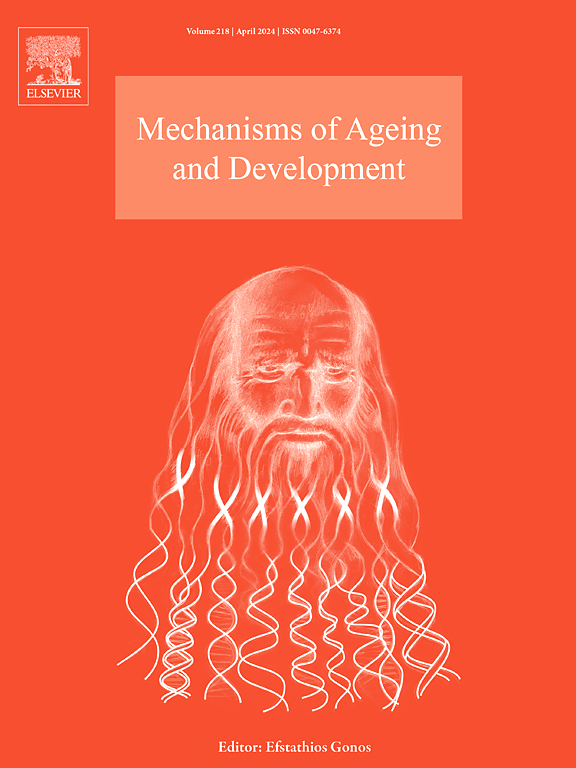Galectin-3-binding protein is a risk factor for diabetes, metabolic syndrome, and inflammation. Cross-sectional and longitudinal results from the InCHIANTI study
IF 5.1
3区 医学
Q2 CELL BIOLOGY
引用次数: 0
Abstract
Galectin-3-binding protein (Lgals3bp), a heavily glycosylated protein that plays a role in cell growth, inflammation, and cellular adhesion, has been associated with tumor development and more recently with carbohydrate and lipid metabolism. The primary aims of these analyses are to examine in the InCHIANTI study participants: 1) the cross-sectional correlations of Lgals3bp serum levels with biomarkers of inflammation, glucose, and cholesterol metabolism; 2) the longitudinal association between baseline Lgals3bp serum levels with changes over time of inflammatory markers, blood glucose, and cholesterol. The InCHIANTI study enrolled representative samples from the registry lists of two towns in Tuscany, Italy. Baseline data were collected in 1998, with follow up visits every three years up to nine years. For this analysis, we used 866 subjects whose variables of interest had been recorded. Subjects were divided in two groups according to Lgals3bp levels, above median AM-Lgals3bp and below median BM-Lgals3bp. In cross-sectional analyses higher blood glucose, plasma insulin, elevated leptin, lower LDL-cholesterol, and inflammatory makers were associated to AM-Lgals3bp levels. Longitudinally, baseline AM-Lgals3bp levels were associated with incident diabetes, MetS, chronic liver diseases, and high multimorbidity score. Lastly AM-Lgals3bp levels predicted high blood-glucose, and high HS-C-Reactive-protein, and low HDL-cholesterol throughout the time of the study. These results point to the role of Lgals3bp in affecting low-grade age-related inflammation, low circulating cholesterol levels, and diabetes. Therefore, Lgals3bp could be further evaluated for diagnostic and therapeutic purposes.
半乳糖凝集素-3结合蛋白是糖尿病、代谢综合征和炎症的危险因素。InCHIANTI研究的横断面和纵向结果
半乳糖凝集素-3结合蛋白(Lgals3bp)是一种高度糖基化的蛋白,在细胞生长、炎症和细胞粘附中起作用,与肿瘤的发展有关,最近与碳水化合物和脂质代谢有关。这些分析的主要目的是检查InCHIANTI研究参与者:1)Lgals3bp血清水平与炎症、葡萄糖和胆固醇代谢生物标志物的横断面相关性;2)基线Lgals3bp血清水平与炎症标志物、血糖和胆固醇随时间变化之间的纵向关联。InCHIANTI研究从意大利托斯卡纳的两个城镇登记名单中招募了具有代表性的样本。基线数据于1998年收集,每3年随访一次,直至9年。在这项分析中,我们使用了866名受试者,他们感兴趣的变量已被记录。受试者根据Lgals3bp水平分为两组,高于中位AM-Lgals3bp和低于中位BM-Lgals3bp。在横断面分析中,高血糖、血浆胰岛素、瘦素升高、低密度脂蛋白胆固醇和炎症因子与AM-Lgals3bp水平相关。纵向上,基线AM-Lgals3bp水平与糖尿病、MetS、慢性肝病和高多病评分相关。最后,AM-Lgals3bp水平预测了整个研究期间的高血糖、高hs -c反应蛋白和低hdl -胆固醇。这些结果表明Lgals3bp在影响低度年龄相关炎症、低循环胆固醇水平和糖尿病中的作用。因此,Lgals3bp可进一步用于诊断和治疗目的。
本文章由计算机程序翻译,如有差异,请以英文原文为准。
求助全文
约1分钟内获得全文
求助全文
来源期刊
CiteScore
11.10
自引率
1.90%
发文量
79
审稿时长
32 days
期刊介绍:
Mechanisms of Ageing and Development is a multidisciplinary journal aimed at revealing the molecular, biochemical and biological mechanisms that underlie the processes of aging and development in various species as well as of age-associated diseases. Emphasis is placed on investigations that delineate the contribution of macromolecular damage and cytotoxicity, genetic programs, epigenetics and genetic instability, mitochondrial function, alterations of metabolism and innovative anti-aging approaches. For all of the mentioned studies it is necessary to address the underlying mechanisms.
Mechanisms of Ageing and Development publishes original research, review and mini-review articles. The journal also publishes Special Issues that focus on emerging research areas. Special issues may include all types of articles following peered review. Proposals should be sent directly to the Editor-in-Chief.

 求助内容:
求助内容: 应助结果提醒方式:
应助结果提醒方式:


